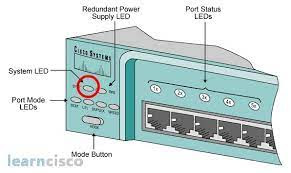Bandung, Telkom University - To pass the CCNA exam and earn this coveted certification, you need to know more about Cisco switches. Among the many important details you need to know are his three methods that Cisco switches use to forward frames, and three differences.
The first intermediary method is store-and-forward. The name is recipe. This is what the switch does, so it saves the entire frame before starting the transfer. This method allows the frame check sequence (FCS) to be performed before the frame is forwarded, thus providing maximum error checking. As always, this error checking process makes it the slowest of the three frame transfer methods, so there are tradeoffs.
The fastest way is cut-through. In this method, only the frame's destination MAC address is examined before the forwarding process begins. This means that some frames are actually forwarded while they are still being received! The trade-off is that FCS is not running. Therefore, cut-through switching does not perform any error checking.
Halfway between these two extremes is fragment-free. This is called fragment-free because fragmented frames are not transmitted. The switch only checks the first 64 bytes of the frame for errors. That's because it's part of the frame that breaks in the event of a collision. There is error checking, but it's not as thorough as store-and-forward.


